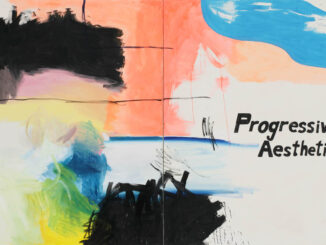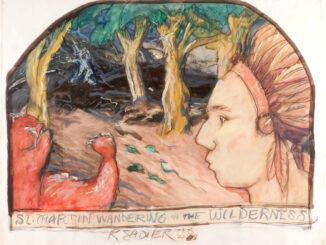Part of the Frost’s longstanding collaborative partnership with the Museum of Contemporary Art in Buenos Aires (MACBA), this exhibition features 30 works spanning 1950-2014. The commanding roster of artists showcases MACBA’s emphasis on crosscurrents of influence in geometric abstraction between artists worldwide. The scope of A Global Exchange sets it apart as one of the only group shows to present the interchange among geometric artists on such a global scale and comprehensive timeline.
The intercontinental cast includes: Tony Costa (Italy), Carlos Cruz-Diez (Venezuela), Gabriele Evertz (Germany), Cristina Ghetti (Argentina), Frederick Hammersley (U.S.), Tadasuke Kuwayama (Japan), Walter Leblanc (Belgium), Almir Mavignier (Brazil), Olivier Mosset (Switzerland), Francois Morellet (France), Sarah Morris (U.K.), Matilde Perez (Chile), Francisco Sobrino (Spain), Julian Stanckzak (Poland) and Victor Vasarelly (Hungary). "The exhibition chronicles an international dialogue between artists that was integral to the development of geometric art," said Curator Joe Houston. He is the author of Optic Nerve: Perceptual Art of the 1960s and was hand-picked by MACBA’s Executive Director Aldo Rubino for the institution’s inaugural exhibition that launched the focus on geometric art. Houston is curator of the Hallmark Art Collection in Kansas City.
"As of Mid-Century, artists from disparate countries experienced newly gained freedom to travel, meet and learn from each other," adds Houston. "Rapid dissemination and absorption of new ideas about modern painting were transmitted and spread internationally. Not just about the formal and technical concerns, but also about the progressive ideals revolving around the movement, the promises of new technologies, and its new egalitarian and optimistic perspectives after World War II, planting the seeds for future generations of artists. There’s a selfless quality about geometric art that creates a dialogue beyond individual artists’ private emotions. As Richard Anuszkiewicz famously proclaimed in the 1960s: ‘What you see is what you get.’"
This updated Miami version of MACBA’s original thrust to explore geometric abstraction adds new focus on modern-day artists spearheading new variations of Color Theory and Op art, plus new acquisitions and historical works not shown before from artists such as Henryk Stazewski. The show traces the trajectories of the movement’s ideals all the way up to the new millennium, with Cristina Ghetti’s 2014 Vibrancy and Joy (zig painting).
There are classic examples of 1960s Op art. The 50th anniversary of the Op movement is in 2015, it debuted with MOMA’s seminal 1965 show "The Responsive Eye," making this exhibition at the Frost a well-timed kick-off to this anniversary. Half of the artists in this show participated in the groundbreaking MOMA exhibit. Rarely seen examples of perceptual art, alongside a broad sweep ranging all geometric art perspectives through six decades, are also showcased.
The exhibition invites visitors to ask how geometric abstraction developed over time and distance, how this form has conveyed larger philosophical and political ideals, and how geometric artists changed the traditional relationship between artist and viewer. "A Global Exchange is more than just the idea behind the name of this exhibition," said Aldo Rubino, MACBA’s executive director. "It is the philosophy and spirit at the heart of MACBA’s mission. Geometric art has become our sole focus at MACBA because it is an art form present in every element of life. Its relation to other sciences like mathematics and physics allows for more open and embracing qualities. It is inclusive – never exclusive."
The Patricia & Phillip Frost Art Museum
10975 SW 17th Street
Miami, FL, 33199
Ph: 305.348.2890
thefrost.fiu.edu




Be the first to comment